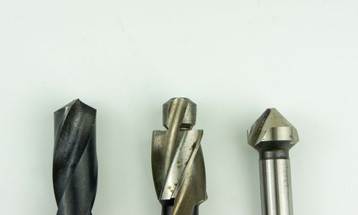31st Mar 2021
How To Select Countersink Drill Bits
How To Select Countersink Drill Bits
A common mistake made by many metalworkers, rookie and veteran alike, is failing to drill a pilot hole before screwing boards together. This pilot hole helps prevent the bit from wandering off course while drilling and creates a cleaner, tighter fit for the screw. For certain types of metals, this includes using a particular kind of bit to clean the hole before inserting the screw. Here is a closer look at how to select countersink drill bits for your projects.
What Are Countersinks
After drilling your pilot hole, the countersink is necessary to make your screw head flush with the metal. This is usually necessary for getting the screw level on metals and hard woods where a drill can’t push in without risking damage. Countersinks are also helpful to smooth the area away and remove any leftover burrs.
Types of Countersinks
There are several different types of countersinks you can use depending upon the situation.
- Fixed – cannot be moved or changed
- Collard – can be adjusted to match the length of the screw; bit is replaceable when worn
- Tapered – most common type; the tip of the countersink is v-shaped
- Flat – countersink tip is flat; best for flat screw heads.
Depending upon the type of bit you use, making the countersink depth may be easy or challenging.
Finding the Right Size
Another thing to consider when selecting the right countersink type is that it must be larger than the bolt size of the hole to ensure the screw head has enough room to enter. Remember to only go as far down as the screw head for a flush surface. Additionally, when using a countersink, go at a slower speed, generally around 1/3 of the speed for drilling, to ensure your bit doesn’t bore too deeply.
For more information on how to select countersink drill bits, contact the experts at Penn Tool Co. today. We offer a wide selection of metal machining bits sure to meet all your drilling needs.

